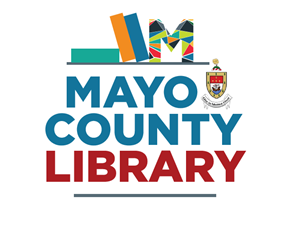Religion
Croagh Patrick
The conical mountain of Croagh Patrick, rising 765 m (2,510 ft) above sea level, has been a place of pilgrimage for many centuries. In the 5th century, St. Patrick followed an ancient routeway to the mountain, now known as the Tóchar Phádraig, and today, pilgrims still walk part of this same route each year, between Ballintubber Abbey and Croagh Patrick. The pilgrim path can be seen from great distances.
On clear days, the oratory on top of the Reek can also be seen as a tiny extension to the mountain. Today's annual pilgrimage to Croagh Patrick, revived in 1905, takes place on the last Sunday in July each year, known locally as Reek Sunday. Traditionally, local people make their own pilgrimage on the last Friday in July, known as Garland Friday, possibly from the tradition of wearing garlands of flowers.
Achill Mission
A controversial figure in the 19th century was Reverend Edward Nangle who established the Protestant Mission in 1831 with the purpose of converting the Catholic population to Protestantism. This led to conflict with the Archbishop of Tuam, John MacHale who was staunchly opposed to what he saw as the proselytising activities of the Reverend Nangle. He made an official visit to Achill in 1854 and established a Catholic school and monastery at Bunnacurry, administered by the Franciscan Order.
He also established other schools on the island in reaction to the evangelical Church of Ireland Mission The mission had its own school, infirmary, mill and printing press which produced the Achill Missionary Herald. It was closed in 1886, 3 years after Nangle's death.
Ballintubber Abbey
Known as "The Abbey that refused to die", Ballintubber abbey is located about 7 miles south of Castlebar It is so called because Mass has been celebrated there continuously since its foundation in the 13th century, despite being almost destroyed in the Cromwellian wars. The abbey was established here in 1216 by Cathal O'Connor for the Augustinian order on the site of an older monastery and some parts of the church date from this time. Partial restorations of the church were carried out in 1846 and again in 1889. the final restoration was completed between 1963 and 1966.
Knock Shrine
In August 1879, fifteen people reported seeing, over a period of two hours, an apparition of the Virgin Mary, accompanied by St. Joseph and St. John the Evangelist, at the south gable of their parish church in Knock, the Church of St. John the Baptist. They also described seeing an altar at the gable of the church on which a cross, a lamb and angels were visible. A special ecclesiastical commission examined the witnesses in 1879 and another commission in 1936 examined the survivors. These commissions found that the 'testimony of the witnesses, taken as a whole, was trustworthy and satisfactory'.
Knock is now visited by up to 1 million pilgrims per year. In 1976 the Basilica of Our Lady, Queen of Ireland was opened here, a project which was initiated and brought to completion by Monsignor James Horan. The basilica has accommodation for over 12,000 people. In 1979 Pope John Paul visited here to coincide with the centenary of the apparitions and in 1993 Mother Teresa of Calcutta was a pilgrim.

